Chainsaw chains are designed to withstand RUGGED conditions.
But unfortunately, they don’t last FOREVER!
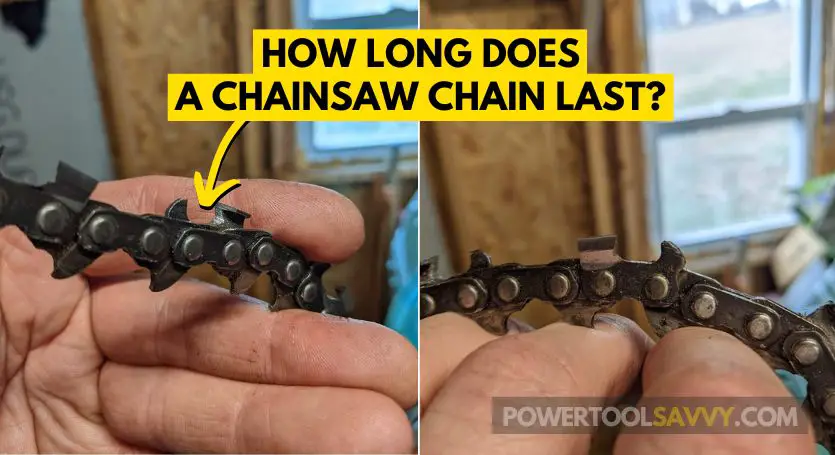
So, how long does a chainsaw chain last?
Most chainsaw chains will last between 1-5 years. If you use your chainsaw daily and tackle tough jobs, the chain won’t last more than a year. But, if you only use it occasionally and take proper maintenance, the chain might last more than 5 years.
Wait, DON’T Leave! 🛑
I’m Samuel Anali and I have over 20 years of experience using chainsaws. In this article, I’m going to cover – 👇
- The factors that affect the lifespan of a chainsaw chain,
- The things that cause a chainsaw chain to wear out quickly,
- Tips to extend the lifespan of a chainsaw chain,
- Signs to tell if a chainsaw needs to be replaced, and many more!
So stay tuned!
Table of Contents
ToggleFactors that can Affect the Lifespan of a Chainsaw Chain
To be completely honest:
Nobody can answer exactly “how long a chainsaw chain will last,” because it depends on TONS of factors.
Here are 5 factors that can influence the lifespan of a chainsaw chain:
1. The Frequency of Use
Let’s start with the most OBVIOUS one!
The more you use your chainsaw, the FASTER its chain will wear out.
For example 👇
A professional logger uses his chainsaw 5 days a week, 4-6 hours a day. It’s no wonder that his chain’s gonna give out way quicker than a homeowner who’s just firing up his chainsaw on weekends!
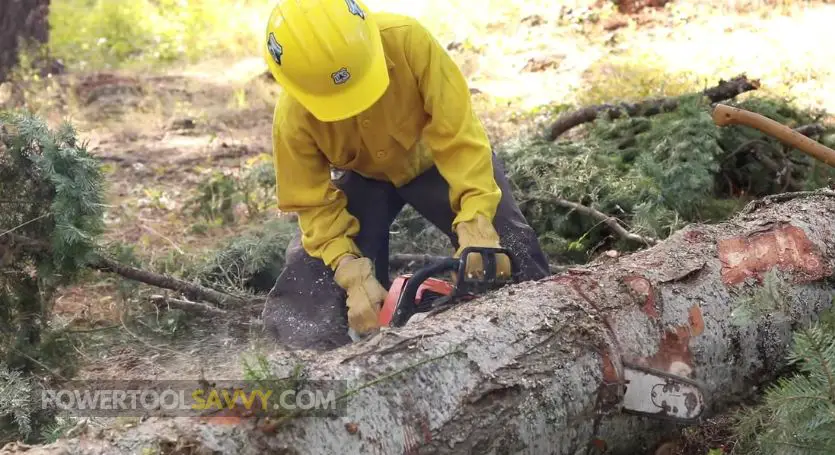
I’ve got this friend named Steve who works as a professional logger, and he mentioned that he has to replace his chains every 2-3 weeks.
On the flip side, my step-brother Jack, he only brings out his chainsaw once or twice a month, and surprisingly, his chains are still in great shape even after 3 years.
The bottom line??
The more stress you put on your saw, the sooner the chain is going to bid farewell!
2. The Type of Wood You Cut
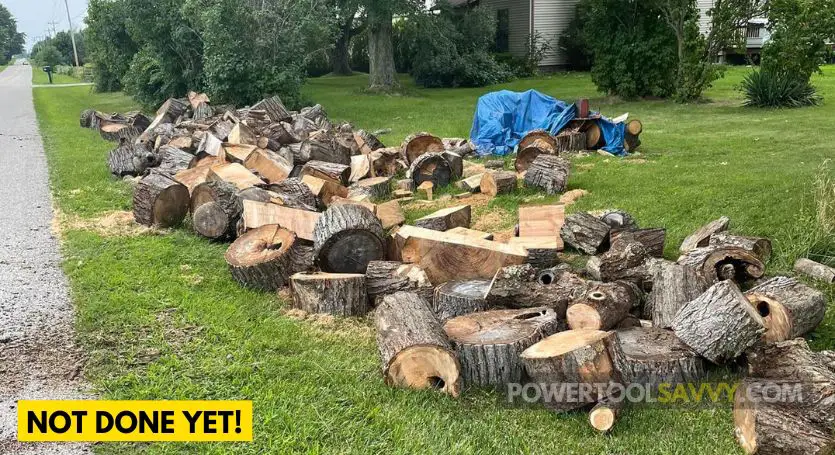
The type of wood you’re cutting also has an impact on how long your chain’s gonna last!
That’s because, cutting hardwood like oak, maple, hickory, and cherry puts considerably more STRESS on the chain compared to cutting softwood such as pine, fir, spruce.
The wood fibers in hardwoods are much stronger and tougher, which makes them more challenging to cut through.
As a result, the chain has to work a lot HARDER and wears out FASTER!
Which type of wood do you usually cut? (Let me know in the comments below!)
3. How Often You Sharpen The Chain
Taking care of your chainsaw chain is a must, but let’s get real here: 👇
If you’re sharpening that chain too often (even when it’s still cutting fine), you’re just shortening its lifespan!
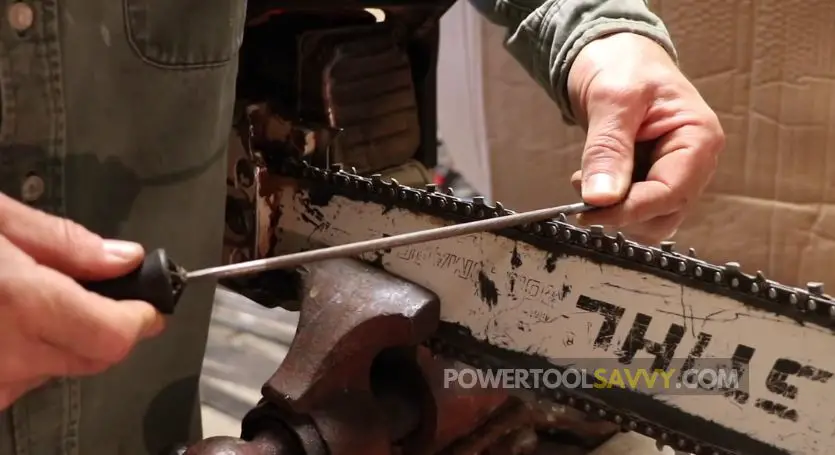
Based on some recent digging, it seems that, a good quality chainsaw chain can easily last 3-4 tanks of fuel before needing to be sharpened.
However, if you’re mostly dealing with hardwoods, you might find yourself reaching for that sharpener after every fuel tank. (that’s normal!)
But, if you’re hitting the sharpening routine more often than that, you’re definitely putting a dent in your chain’s longevity.
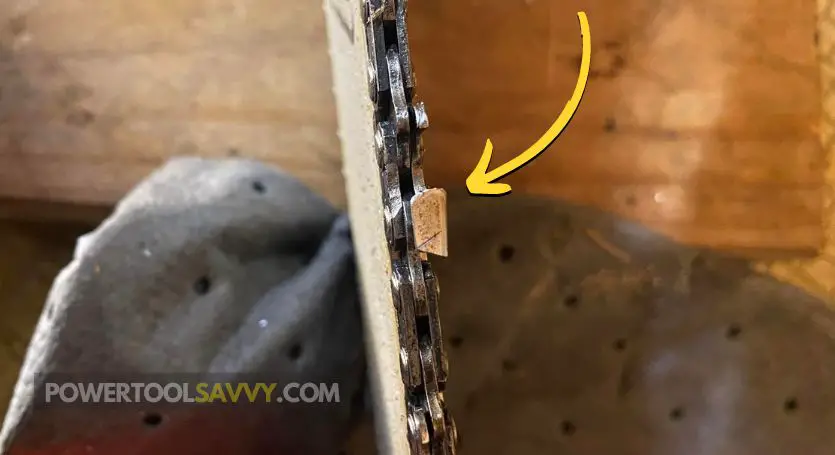
4. How Well Your Chainsaw Chain is Being Lubricated
Ensuring proper oiling is an absolute must for your chainsaw!
Why??
Well, when your chainsaw chain is slicing through wood, it generates a considerable amount of heat due to all the friction.
Now, if your chain isn’t getting the right amount of lubrication 💦, it won’t do the job efficiently; instead, it might burn the wood and even damage itself.
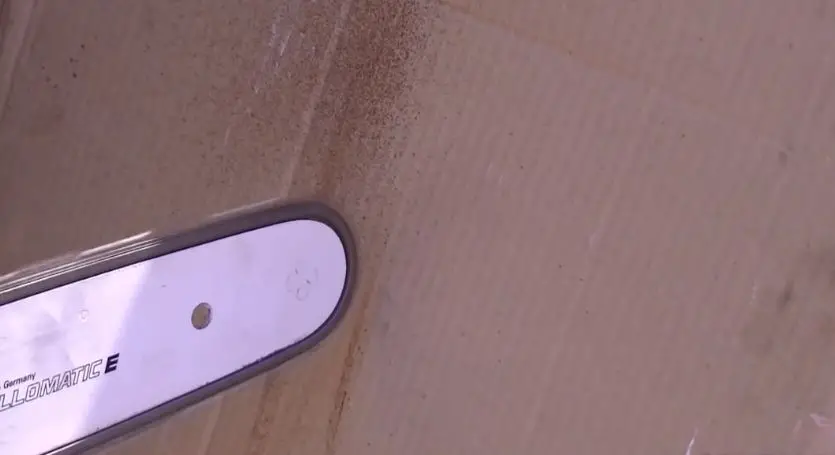
So, If you want your chain to last longer, make sure your chainsaw’s oiling properly. I’d also recommend using a good quality bar and chain oil.
(If your chainsaw isn’t oiling, check out this article where I’ve shown how to fix a chainsaw that’s not oiling!)
5. The Quality of the Chainsaw Chain
A branded, pre-heated chain will obviously last longer than a cheap, low-quality, CHINA chain. That’s not surprising at all!
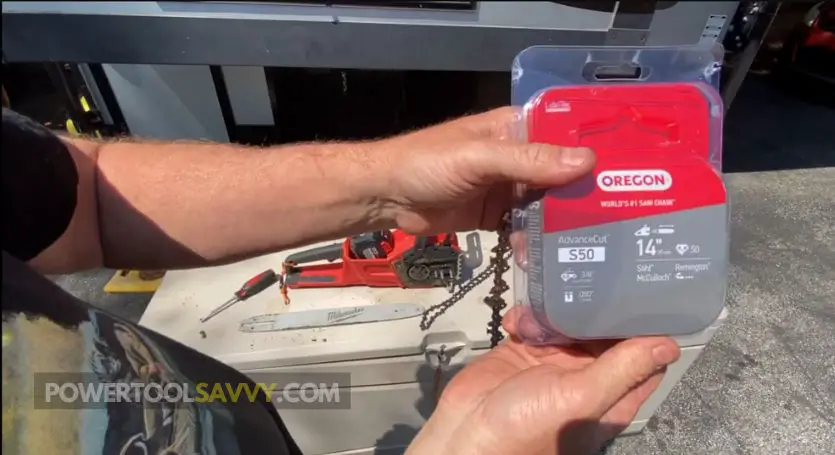
I won’t promote any particular brand here, but I’ll say this:
Do your research and buy only the chainsaw chains that have been specifically designed for your job.
If you buy a low-quality chain, it won’t last as long and might even break while in use!
6. Maintenance and Care
In the end, it all comes down to how well you maintain your chainsaw chain.
If you give it some love and attention, like cleaning it up, keeping it lubricated, giving it a good sharpening when needed, and storing it properly, it’s pretty obvious it’s going to stick around longer.
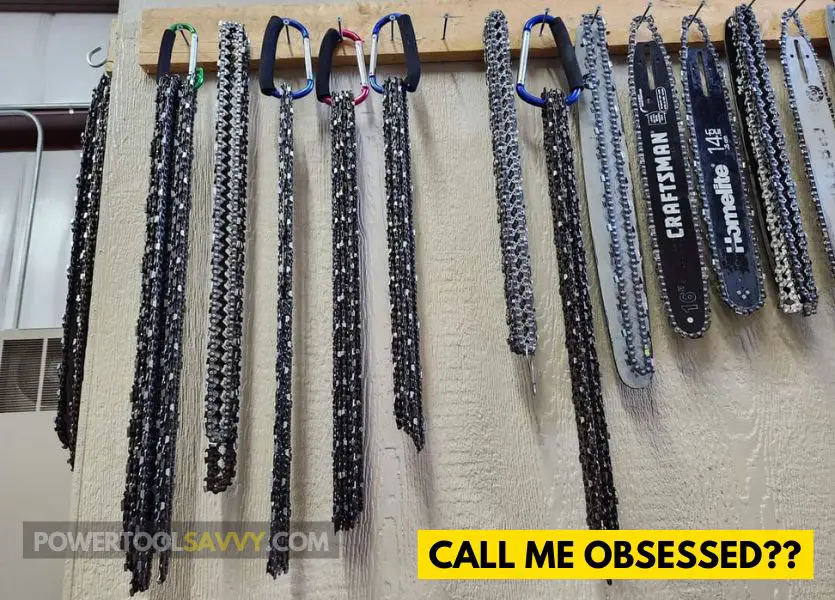
You know, I learned this lesson the hard way.
Back when I was just getting the hang of things, I didn’t really pay much attention to my chains, thinking they could handle anything. (No BIG deal!)
But after a few unfortunate incidents of dull blades and unnecessary wear and tear, I realized the importance of proper maintenance.
Now, I make it a habit to clean, lubricate, and sharpen my chains regularly.
And guess what?
The difference in performance is night and day. Plus, it saves me money in the long run, as I don’t have to replace the chains as often.
Things that can Cause Your Chainsaw Chain to Wear Out Faster
Here are 5 things that can cause your chain to wear out faster: 👇
- Making contact with the ground: TRUST me! This is the biggest enemy of your chainsaw chain. It might not seem like a big deal, but let me tell you, even a split-second touch of the ground can ruin that chain in no time!
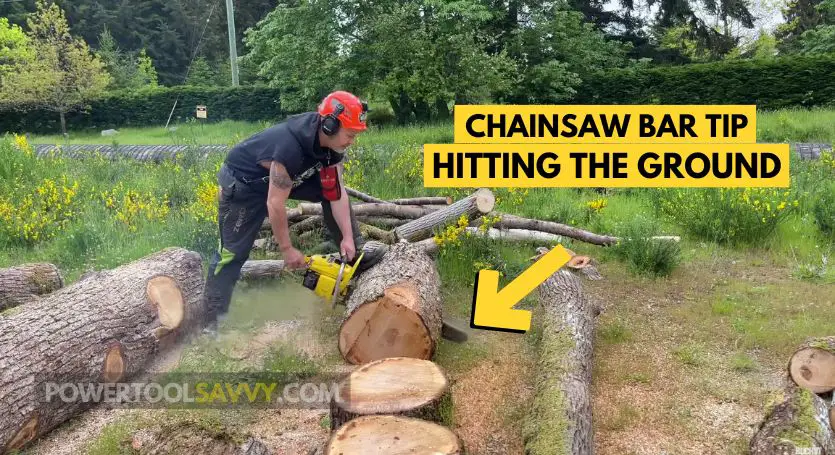
- Cutting through dirt or sand: Dirt is abrasive and it can wear down your chain faster than you’d expect.
- Rust: If you don’t give your chain the care it deserves, rust can sneak in and mess things up. It weakens the chain and chips away at its durability over time.
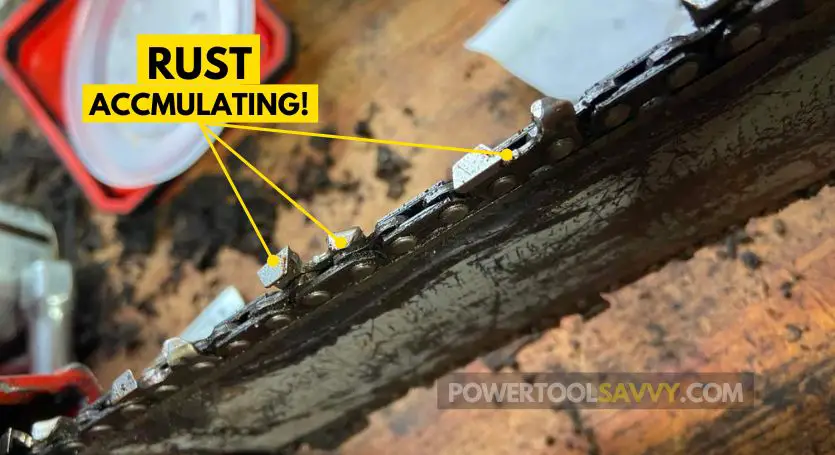
- Lack of lubrication: Proper lubrication is the KEY to a long-lasting chainsaw chain. Without it, that chain’s gonna turn dull and brittle in a hurry.
- Hitting rocks, metal, or other abrasive materials: This one’s pretty self-explanatory! Chainsaw chains aren’t designed to cut through rocks or metals. Doing so will wear them down in no time.
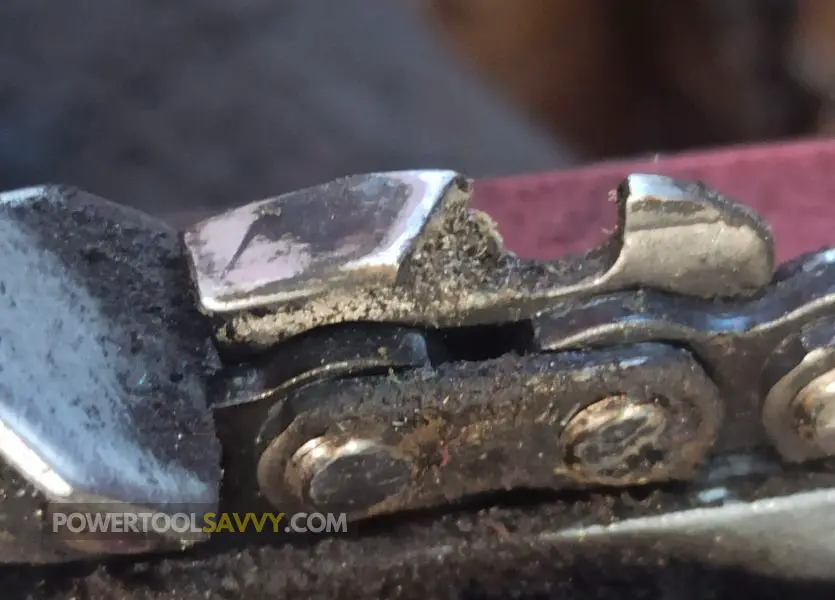
Wanna learn more??
I’ve written an entire article on the topic, discussing other factors that can dull a chainsaw chain quickly! Go CHECK that out.
How to Tell If a Chainsaw Chain Needs to be Replaced?
Here are 6 signs that your chainsaw chain needs to be replaced: 👇
- Your chainsaw starts to smoke when cutting,
- Your chainsaw produces powdery sawdust instead of wood chips.
- You notice that the cutting teeth are excessively worn or chipped (making it difficult to achieve a clean cut).
- You have to apply extra pressure to make your chainsaw cut.
- Your chainsaw doesn’t cut straight. (Learn More: Why Isn’t My Chainsaw Cutting Straight?)
If you notice any of these signs, then it might be time to give your chain a check-up!
6 Chainsaw Chain Maintenance Tips
I know you’ve been waiting for this from the START!
Here are 6 maintenance tips to make your chainsaw chain last longer:
1. Keep Your Saw Chain Well Lubricated
Every chainsaw out there comes with its own built-in chain and bar lubrication system.
Regular maintenance and checks for this system are crucial to ensure your chainsaw keeps running smoothly and efficiently.
Make sure – 👇
- the oil tank isn’t empty,
- the oiler holes aren’t clogged or blocked (check the image below), and
- the oil pump is working.
Also, use a quality bar and chain oil!
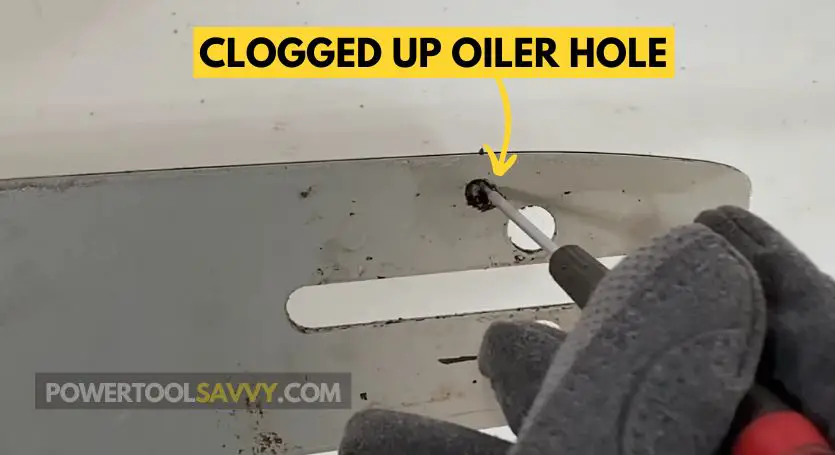
2. Make Sure Your Chain Tension is Right
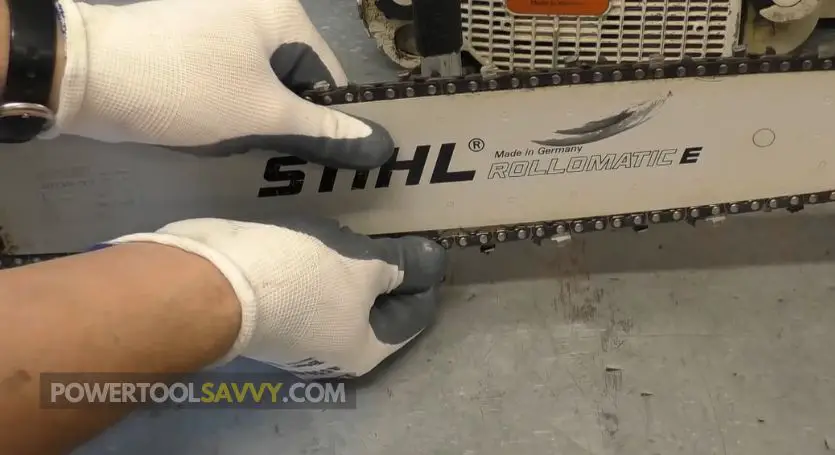
If your chainsaw chain is TOO loose, it’ll not only affect the cutting performance but also cause the chain to wear out quickly!
So, before you dive into any cutting job, do a quick check to ensure your chain tension is spot on!
I’d also suggest taking a look at these 2 articles:
3. Sharpen Your Chainsaw Chain the Right Way
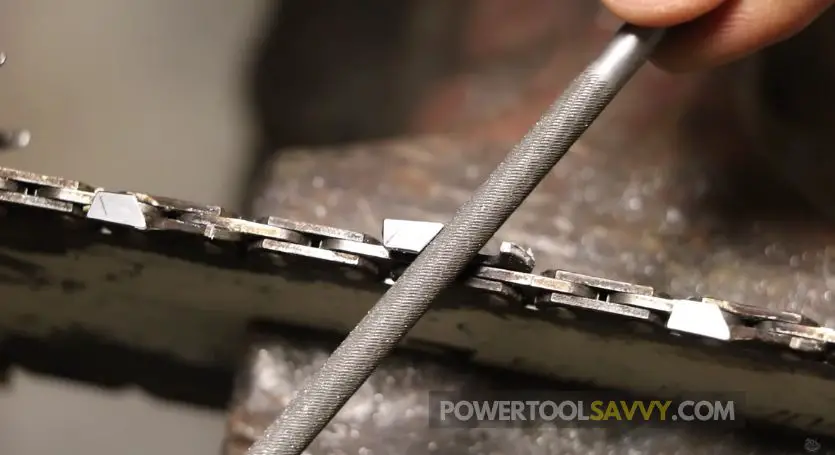
there’s a pretty big bunch of chainsaw users out there who aren’t quite sure how to sharpen their chainsaw chains the right way.
Believe it or not, it can actually do more harm than good, making those chains lose their edge way too soon.
So how do you do it?
Here’s an AWESOME video tutorial that’ll walk you through the whole process:
I’ve got this article where I’ve rounded up 10 common mistakes folks make while sharpening their chains. You should also check that out!
4. Avoid Cutting Dirty Wood
Your chain’s not going to stick around for long if you abuse it by cutting dirty wood or smacking into rocks, nails, or anything tough.
Always use your chainsaw on a CLEAN cutting surface, and make sure the cut is clean, too.
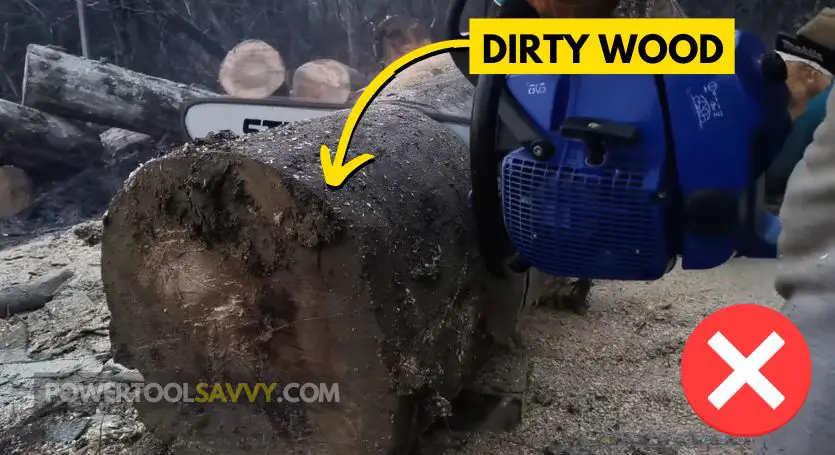
5. Keep Your Chain Clean
Sawdust, dirt, oil, and other debris can easily get stuck between your chain components (e.g., tie-straps, rivets) and wear them out!
So, clean your saw chain at least once every 30 days so that the debris doesn’t accumulate and damage it.
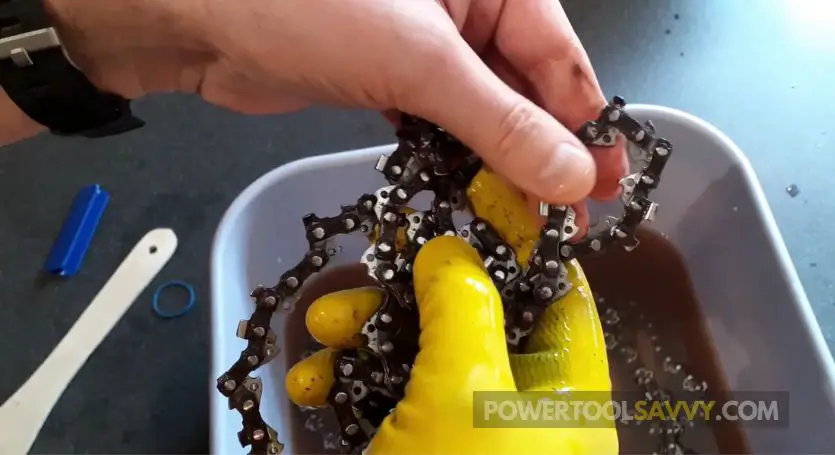
That way, you’ll prevent all that debris from building up and causing any damage.
Trust me, it’ll keep your chainsaw running smoother and definitely extend its lifespan!
I personally use a WD-40. It’s like a magical elixir for chains. It helps break down and clean out all that stubborn sawdust, dirt, and oil that tends to sneak in.
6. Replace Your Chain Sprocket When It's Worn Out
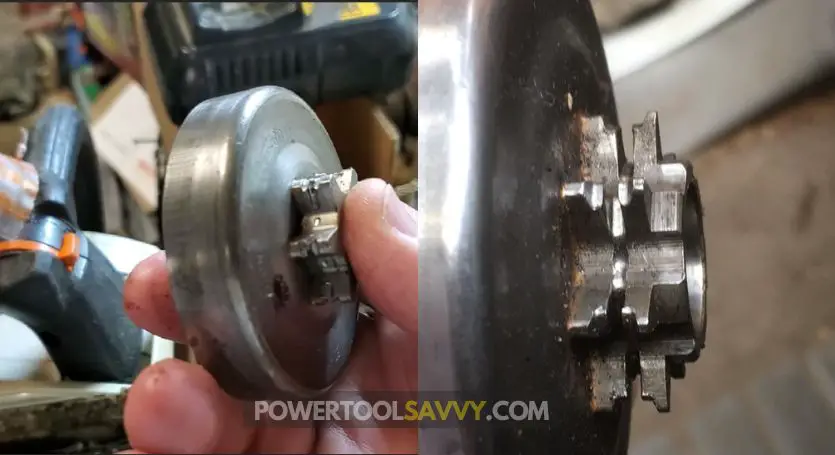
Yup, you heard that right!
If your chainsaw chain sprocket is worn-out or heavily damaged, replace it ASAP!
Otherwise?
Well, otherwise, it could cause some serious damage to your chain.
Oregon clearly says, “Never run any chain on a worn drive sprocket, especially a new chain. Replace drive sprocket systems after every two chains, or sooner.” (Source, Page: 24)
Learn More: When to Replace Your Chainsaw Sprocket?
Which Chainsaw Chain Lasts the Longest?
Carbide-tipped chainsaw chains tend to last the longest. They’re made from tungsten, which is way tougher than regular steel. Also, they feature a longer-lasting cutting edge that requires less frequent sharpening.
Though, lookwise, carbide chains are quite similar to regular chains!
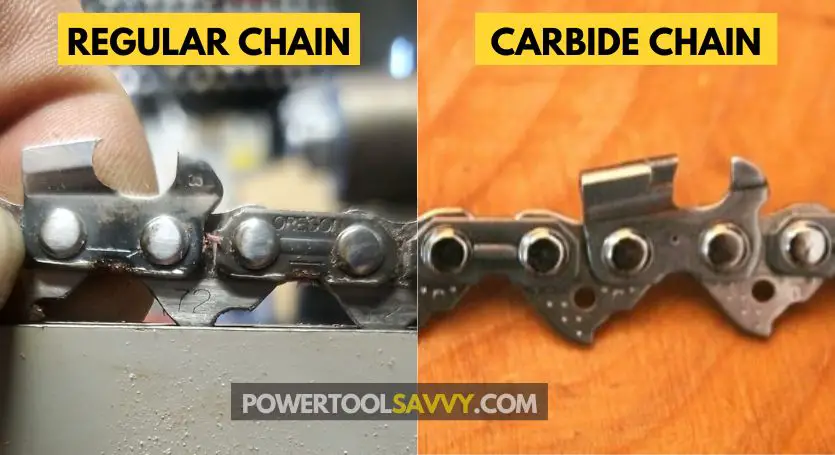
You know what’s a bit of a turn-off when it comes to carbide chains?
Yup, you guessed it – the price tag! 💸
Carbide chains can be quite a bit pricier than your standard ones. A quality carbide-tipped chain can set you back anywhere from $80 to $100.
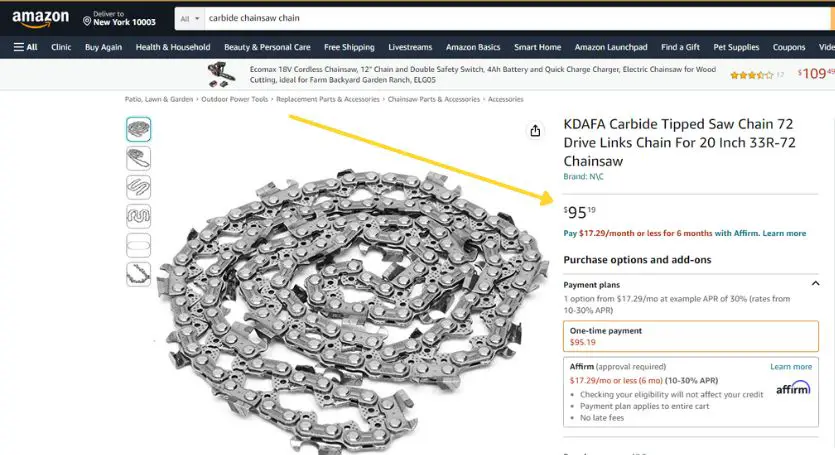
On top of it, these chains are way more complicated to sharpen than standard chains.
I’ve recently published an entire explaining whether carbide chains are worth it or not. If you’re looking for more in-depth info, I’d recommend giving it a read!
GoodBye Words!
That’s all for this one!
If you’ve got any other tips or questions about chainsaw chains, feel FREE to let me know in the comments below!
Take care and Happy Chainsawing! 🙂 🙂
Related Articles:

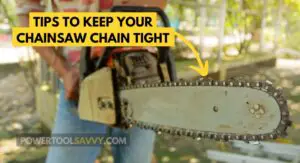
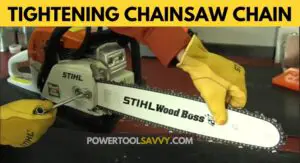

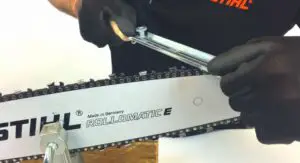
Pingback: Do Chainsaw Chains Stretch? (STOP Wasting Your Money!)
Pingback: 10 Chainsaw Sharpening Mistakes You Need to Avoid
Pingback: Are Carbide Chainsaw Chains Worth It? (STOP Wasting Money)